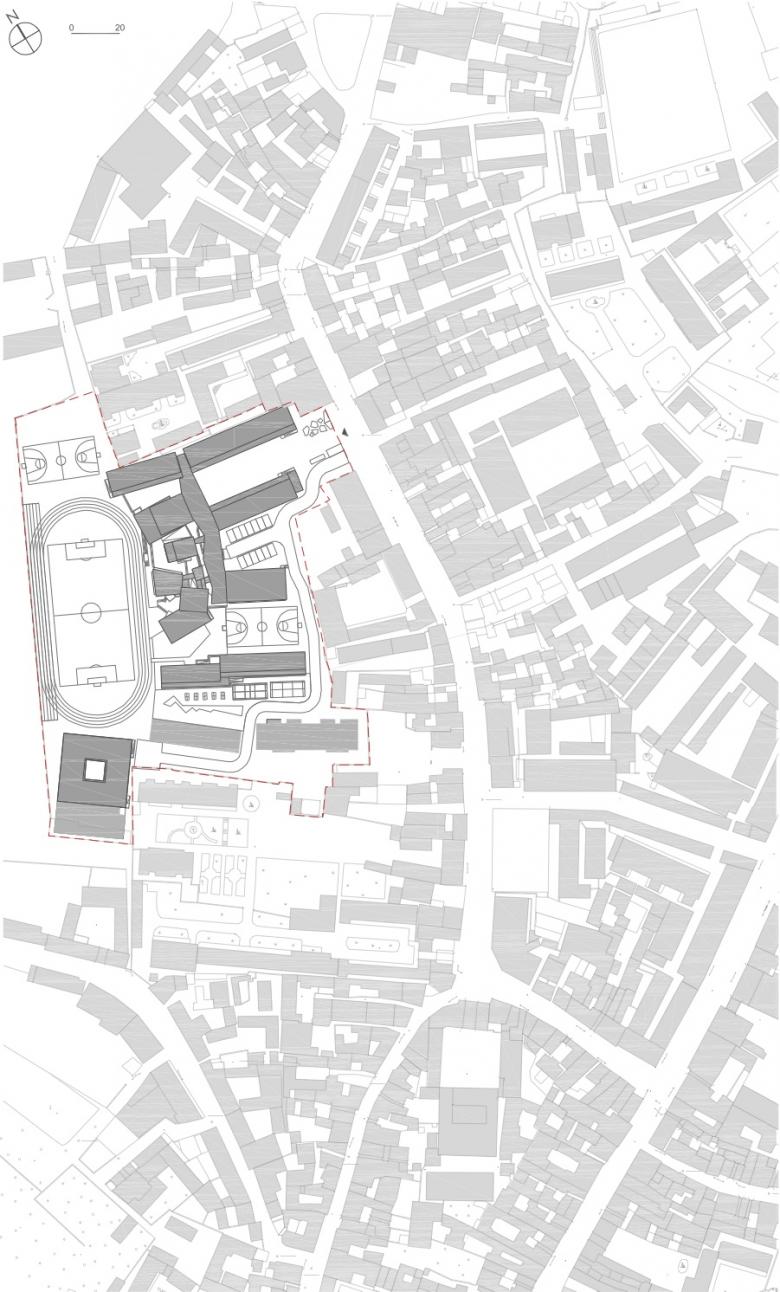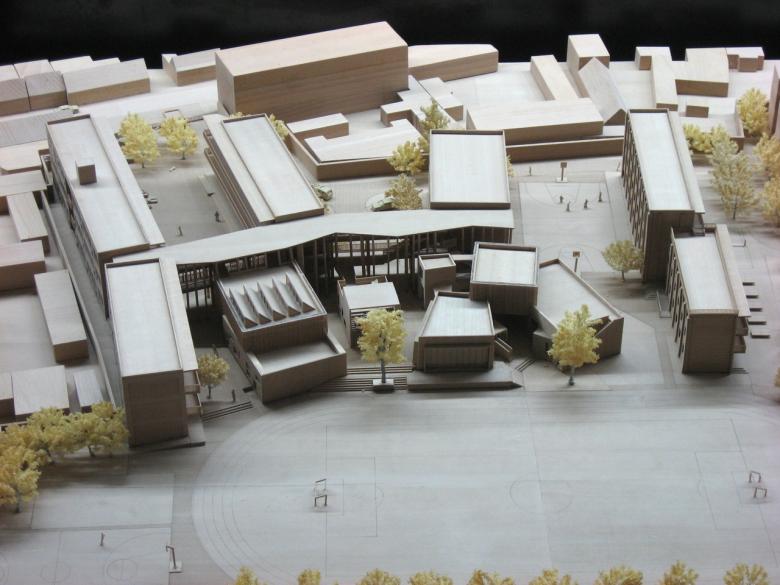Xiaoquan Elementary School
Where the future lives
22. December 2011
The Great Sichuan Earthquake on May twelfth 2008 killed at least 69,000 people. Alone in the administrative district of Deyang, one hour north of Chengdu, more than 17,000 people were killed. Due to poor construction and corruption in the building industry at least 7,000 schoolrooms collapsed in the region and caused the death of thousands of pupils. The ordinary people accused the officials and builders for the so called “tofu-dreg schools” with shoddy construction. Sloppiness and personal enrichment at the expense of structural safety caused the collapse of many schools.
Entrance
Soon after the quake donations were collected all over the country to rebuild the schools in the region. In the case of Xiaoquan Elementary School money came from the Red Cross in Jiangsu Province, by a Buddhist Temple Foundation in Guangzhou, by students from Beijing University, Tsinghua University and from others. The sponsors not only raised money, but also selected TAO Architects based in Beijing.
Between school and sports field
They went to Sichuan and talked to the responsible people on the spot, in order to learn about their experiences and problems. The main idea of later developed conceptual design was, to follow the size and space structure of the old town. The concept, to think of the school as a small urban cluster, led to a group of different buildings, connected by an open covered walkway, which binds the single parts together. The new school consists now of transformed “streets, plazas, alleys and courtyards”. The children become acquainted to narrow and open spaces, the whole variety of the urban experiences in the realm of the school and have the possibility to play between the lessons in an inspiring
View across the roofscape
In an area, where architects usually don't work, the technical aspects of such a project needed special consideration. TAO Architects used as much local resources as possible and tried to design according to the technical know how of the local craftsmen. In many other rebuilding projects in Sichuan, workers came from other provinces to do the rebuilding work with expensive materials from elsewhere, because they were not available in the areas affected by the disaster. This not only made buildings more expensive, but also less connected to the local community.
Entrance platform
In the case of the Xiaoquan Elementary School local bricks, wood, bamboo and concrete was used. Due to the fact that after the earthquake the local material supply was very limited, the bricks came from several small kilns in the region, with the result that all have a slightly different colour. To make the best of it, the architects decided to use for each of the buildings a different brick, which makes the result even more natural in its appearance. For the landscape and the pavement of the schoolyard they used recycled bricks leftover from the relicts after the quake. The most challenging part for the local craftsmen was the processing of the exposed concrete. With several experiments under the guidance of the architects and with lots of communication to make the locals understand the basic technical details, the quality is almost perfect. Only a few parts needed a final finish.
Courts
The architects could not stay at the building site for the whole time of the construction process. Therefor the most important aspect was, to make the workers understand the concept and then let them go along the given guideline with their own imagination. In this process also the architects can learn a lot. First and most important in a developing country like China: how to use the workers eager will to learn and integrate their own know how in the framework of a strong design concept.
Street space
The final result was discussed among the local community after the school was put in operation. Some criticised the dark colour of the bricks and concrete, and in general the harsh materiality. They argued, that a school should look more colourful. But the children do not care about their arguments. They use the exiting spaces and add vibrancy with their activities and works. For them it is a big gift to learn in an environment designed with more in mind than pure functionalism, as seen all too often in such projects. The construction cost with 1,400 RMB per square meter was much lower than in many other projects. Some schools, made with material from other provinces, reached a square meter price up to 7,000 RMB.
Space to move
The Xiaoquan Elementary School adds a new school to the map of the town and on the list of the relief projects, but it also opens a social space for the community, that will help to overcome the shocking experience of the earthquake. The future generation learns now in an environment of contemporary architecture with the local taste of space and material. The school proofs, that with little money, but a lot of goodwill, it is possible to change things for the better even in the small towns of the Chinese hinterland (where the future lives).
Eduard Kögel
Run and hide
Site plan
Model
Plan
Xiaoquan Elementary School
2011
Xiaoquan town, Deyang
Sichuan
Client
Xiaoquan Elementary School
Architect
TAO
Hua Li
Beijing
Project Team
Zhu Zhiyuan
Liu Yunhan
Li Guofa
Kong Desheng
Jiang Nan
Structure and Material
Concrete, brick, wood, bamboo
Total Floor Area
8,900 sq. m.
Cost
14,000,000 RMB
Photos
Yao Li










